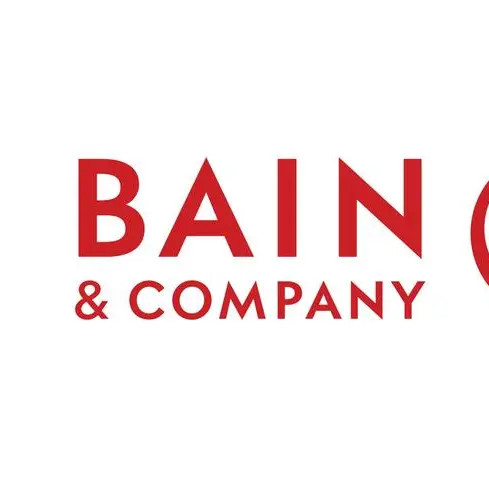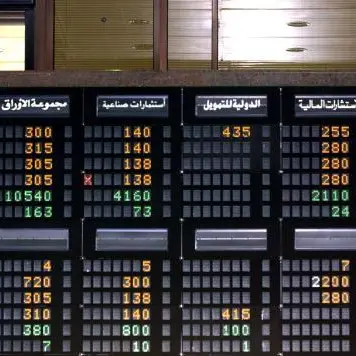This report does not constitute a rating action.
Gulf Cooperation Council (GCC) economies, already benefiting from high hydrocarbon prices, are set to get an extra boost from this month's FIFA 2022 World Cup. More than 1.2 million fans are expected to attend the event, increasing Qatar's population by about 1.5x. This paves the way for Qatar to enjoy potential near-term economic gains but also highlights the logistical challenges of managing the event, which will likely lead to positive spillover effects for the rest of the region.
We also foresee a post-World Cup slowdown in economic activity in Qatar. Oversupply in the hospitality and real estate sectors could somewhat moderate their performance, although we don't expect this to materially affect banking sector asset quality.
We have received questions from investors about how hosting the World Cup could affect Qatar.
Our Credit FAQ seeks to address the key questions and broaden the discussion to include the rest of the GCC.
Frequently Asked Questions
How will the World Cup affect the Qatari government's creditworthiness?
We expect the direct impact of the World Cup to be positive but mostly short-lived, not resulting in any specific change to our medium-term view of Qatar's economic growth outlook. Our recent upgrade was based on the government's declining debt burden and the expected increase in government revenue following the North Field Expansion (NFE; see "Qatar Upgraded To 'AA' On Declining Debt Burden; Outlook Stable," Nov. 4, 2022).
We estimate real GDP growth of 4.8% in 2022, a sharp increase on 2021 (1.5%), partly due to the additional economic activity associated with the World Cup, but also reflecting the ongoing recovery following the removal of COVID-19-related restrictions. We estimate non-oil GDP growth in 2022 at 8%, compared with close to 3% in 2021. Some media reports suggest that non-World Cup activity such as office opening hours could be restricted, partly dampening non-oil growth. We expect hydrocarbon sector growth to be broadly flat, but because this sector (mostly gas production) accounts for about 65% of real GDP this lowers our overall GDP estimate. We foresee a significant increase in Qatari gas production only from 2025 onward as a result of some phases of the NFE beginning that year. This would increase QatarEnergy's LNG production capacity from 77 million tons per year (mtpa) currently, to 109 mtpa in 2025 and to 126 mtpa by 2027.
The authorities have been implementing a 10-year roadmap of projects for 2015-2024 to diversify the economy, as part of Qatar National Vision 2030, and prepare for the World Cup. We estimate the government's capital expenditure to average 13% of GDP over 2015-2022. The projects have focused on roads, a new metro and sewage system, hospitals, and schools. These investments would have taken place with or without the World Cup. Direct spending on sporting facilities to house World Cup events has been small in comparison, budgeted at about 3% of GDP.
Qatar is competing with the rest of the GCC in trying to attract foreign investment. Dubai is already a well-established regional business hub, while Saudi Arabia has a much larger population and therefore a captive market. Notwithstanding controversies leading up to the World Cup, including the switch in timing of the event from Europe's summer to winter, and issues around workers' rights, we believe that longer term benefits of hosting a successful event could emerge, enhancing Qatar's global profile and its aim to be a sporting hub. Hosting the World Cup is a different order of magnitude, but Qatar has successfully held major sporting events including the Asian Games (in 2006 and will again in 2030), the Asian Football Confederation Cup, the World Men's Handball Championship, IAAF World Athletics Championships, and the FIFA Arab Cup, among others.
Qatar aims to reach 6 million visitors annually by 2030 as part of its long-term economic plan (Qatar Vision 2030). In 2021, Qatar welcomed 0.6 million international passengers, further improving to 0.7 million in the first half of 2022, albeit below the 2.1 million in full-year 2019.
Will the wider GCC also benefit from the World Cup?
We expect so. Qatar's Supreme Committee for Delivery and Legacy is confident there will be no shortfalls in accommodation, with up to 130,000 rooms for the one-million-plus fans expected during the 28-day event. Accommodation options in Qatar include two cruise ships with more than 4,000 cabins, and fan villages at four different locations. People can also stay in apartments, villas, holiday homes, Bedouin tents, and caravan villages.
We expect that neighboring GCC countries will also host large numbers, benefiting their aviation and tourism sectors. The GCC's official accommodation portal prioritizes ticket holders. Visitors arriving in Qatar without match tickets could struggle to find a room and instead opt to stay in a neighboring country. Meanwhile, accommodation prices in Qatar have soared, perhaps making it more economical for some fans to stay elsewhere and use the multiple shuttle flights to Doha from the wider GCC. That said, accommodation prices have increased in the GCC more broadly to reflect the increased demand.
Which of the other GCC cities will benefit the most?
Although we see spillover effects across the region, we expect Dubai (not rated) to be the main beneficiary outside of Qatar, given its geographical proximity and its already well-established tourism offering, major attractions, airline connections with the region and the world, and multiple-entry tourist visas for World Cup ticket holders.
Dubai Expo 2020 (October 2021-March 2022) boosted its international visibility. As a result of the Expo, hotel room prices soared by 43% year-on-year from January to August 2022 and occupancy rates improved significantly (71% in the same period versus 61% a year ago).
We expect occupancy to remain high in the second half of 2022 and particularly during the World Cup when we expect Dubai's hotels to be close to full capacity. This will see room prices climb further still, even if only for a few weeks. This is despite the supply of rooms having increased recently amid new hotel openings; we expect a 10% increase by end-2022 from about 140,000 rooms at end-2021. Dubai's hotel capacity is more than 3x higher than that of Qatar and we expect football fans to take full advantage, supported by daily shuttle flights between Dubai and Doha, less than an hour away. The absence of any pandemic-related restrictions, including no requirement for PCR tests (from most destinations), further simplifies travelling to and from Dubai.
Higher visitor numbers will also lift the retail sector, but this may soften in 2023 if inflation accelerates and if the uncertain economic environment weighs on discretionary spending and makes consumers more cautious about essential spending. An increase in international visitors will somewhat alleviate this risk, which we think will remain a medium-term concern for 2023 as economic pressures pile up globally. Mall operators will benefit from improved footfall, which to date remains below pre-pandemic levels on average, partly offset by higher spending per person.
The most recent data for the third quarter of 2022 suggests some improvement in rental rates (up by 3% year-on-year), but we expect rental prices to soften as new supply comes to market.
Residential real estate remains very strong, however, with transactions growing by 40% up to August 2022. This comes with double-digit year-on-year price increases for villas and apartments.
We do not expect the World Cup to have a material knock-on effect on real estate transactions in Dubai. Rental increases and reduced availability are the most likely short-term consequences, even though this could marginally fast track investment decisions for some wealthy investors. As a long-term benefit, however, this will help drive Dubai's brand and raise its attractiveness as it aims to attract more expats, targeting to grow its population to 5.8 million by 2040 from about 3.5 million, currently.
Are Qatari companies expected to benefit from the World Cup?
We expect the hospitality, residential real estate, retail, and telecoms sectors to reap tangible benefits from the World Cup. Entities' fourth-quarter earnings should benefit from the increased activity, but we don't foresee any structural changes to the long-term credit profiles of the corporates we rate. The hospitality and real estate sectors may experience something of a downturn in subsequent quarters.
Hospitality. New hotel openings in 2022 will only partly accommodate sports fans in Qatar. The country reportedly had about 30,000 rooms at the end of 2021 but expects to see a more than 30% increase in 2022 as many new hotel openings have been fast-tracked for the World Cup. We understand that the authorities had blocked about 80% of existing rooms for teams, sponsors, and VIPs. Having met that demand, they have only just begun releasing several thousand unallocated rooms. We expect the event to further lift average daily room rates, which had already started to recover in 2021, and lead to close to full occupancy during the event. In the longer run, though, we think that the new additions will weigh on occupancy and room rates as international tourism and business travel falls away after the World Cup.
Residential real estate. Positive effects will come mainly from higher rental and occupancy rates. At the end of 2021, rents had already started picking up but sales prices have hardly improved. Rental revisions are notable but vary depending on property type. For example, we expect Ezdan (B-/Stable), a major real estate company in Qatar, will be able to pass on rental rate hikes to leases coming up for renewal in 2022. We also expect the supply of new residential units to speed up compared to the past few years, raising the total residential space to 323,000 units, up by 5% (Valustrat, Q2 2022 report). Ezdan, for instance, plans to release 4,000 new residential units over 2022 in response to higher demand, bringing its total rented units to about 29,000. Occupancy rates will improve as the event approaches and will translate into much stronger cash flow generation.
However, after the World Cup ends, the inventory build-up will lead to a correction in rental rates that will gradually affect 2023 results as leases are renewed. Economic pressures, including higher interest rates, will soften demand by end-2022, sustaining pressure on rents and sales prices in 2023. We also expect mortgage transactions to slow as the Qatar Central Bank follows the Fed's rate hikes, and its lending rate is now 4.5% following the September 2022 revision (2.5% at the end of 2021), with likely further hikes in 2023. Still, real estate properties in Qatar remain attractive for some investors, as the Qatari rial is pegged to the U.S. dollar. This provides stability when emerging currencies are depreciating against the dollar, as well as a relative safe haven in the region. The 6% population growth we expect in 2022 (about 90% are expats) will only partly mitigate rental pressures, particularly as most workers will leave again in 2023 once the finishing touches to the World Cup preparations are completed.
Retail. Higher international visitor numbers will increase traffic in malls, which have been gradually recovering since the pandemic. Higher footfall will propel retail sector recovery, thereby temporarily increasing the variable lease component that will benefit mall operators. Still, new projects this year have increased retail space by over 20%, leading to additional capacity that will put pressure on rental rates and occupancy in the longer run.
Telecoms. Telecom operators in Qatar (Ooredoo and Vodafone) will also benefit from an influx of football supporters. Operators have incurred some additional costs as they get ready to welcome up to 1.5 million visitors, but we expect those to be offset by higher seasonal profits as roaming revenues increase along with data consumption. Ooredoo (A-/Stable) has been selected as the official global connectivity services provider for the event, and we expect it to capture the lion's share of growth. This will be limited given the scale of its operations domestically, with Qatar contributing 34% of its overall consolidated revenues and 42% of EBITDA as of June 2022. We expect Ooredoo to report an increase in pre-paid customers in its fourth quarter, as well as higher roaming and data revenue. It should also benefit from higher video feeds and data transport for the media broadcasters that will be relaying the event globally. World-leading fiber and 5G penetration in Qatar will enable Ooredoo to address higher demand, in our view.
Have Qatari banks already benefited from World Cup preparations?
Overall, the World Cup will have a limited effect on Qatar's banks compared to the benefits of the government's broader infrastructure development plan. There have been some material tangible benefits, however. Loan growth has benefitted from the increase in associated economic activity over the planning and development phases, particularly from the uptick in credit demand related to the construction of infrastructure required to host the tournament.
We also expect consumption lending and working capital needs to increase over the fourth quarter of 2022, boosting private-sector credit growth toward 5% for the year, before slowing in line with real GDP expectations. Indirectly, the tournament will likely boost sectors that suffered during the pandemic, particularly tourism, travel, hospitality, and real estate. However, post-tournament, the prospects of hospitality oversupply and weaker economic growth contribute to our expectation of still-elevated cost of risk in Qatar of about 80 basis points in 2023. We note that large international hotel chains likely have limited local financing requirements and consider that, while weaker real estate performance could translate into some losses, these should be contained below pandemic levels.
Will risks related to hosting the World Cup be covered by the Qatari insurance sector?
We believe that Qatari insurers have already been benefiting from the World Cup in the run up to the event. They have been providing insurance cover for large infrastructure and construction projects, such as the drainage system, the metro, and stadiums, supporting their top- and bottom-line incomes. Insurers will also play an important role during the event. It has been widely reported that FIFA has purchased insurance coverage of $900 million for the tournament to cover any costs in case of cancellation, postponement, and/or the relocation of the event. While a consortium of six local insurers is providing cover relating to property, third-party liability, and other risks, we believe that most of these large risks are, for capacity reasons, fully ceded to the international reinsurance market in return for inward commissions that enhance profitability.
In early October, authorities in Qatar announced that all visitors to Qatar will have to obtain insurance covering medical emergencies unless they hold a global health insurance policy that includes Qatar and covers basic healthcare including emergency and accident services. However, it is becoming increasingly unlikely that this scheme will be ready before the start of the World Cup. We therefore expect the World Cup to have a relatively limited impact on the sector's overall premium income and earnings.
-Ends-
About
STANDARD & POOR’S, S&P and RATINGSDIRECT are registered trademarks of Standard & Poor’s Financial Services LLC.
S&P may receive compensation for its ratings and certain analyses, normally from issuers or underwriters of securities or from obligors.
S&P reserves the right to disseminate its opinions and analyses. S&P's public ratings and analyses are made available on its Web sites, www.standardandpoors.com (free of charge), and www.ratingsdirect.com (subscription), and may be distributed through other means, including via S&P publications and third-party redistributors. Additional information about our ratings fees is available at www.standardandpoors.com/usratingsfees.
S&P keeps certain activities of its business units separate from each other in order to preserve the independence and objectivity of their respective activities. As a result, certain business units of S&P may have information that is not available to other S&P business units. S&P has established policies and procedures to maintain the confidentiality of certain non-public information received in connection with each analytical process.
To the extent that regulatory authorities allow a rating agency to acknowledge in one jurisdiction a rating issued in another jurisdiction for certain regulatory purposes, S&P reserves the right to assign, withdraw or suspend such acknowledgment at any time and in its sole discretion. S&P Parties disclaim any duty whatsoever arising out of the assignment, withdrawal or suspension of an acknowledgment as well as any liability for any damage alleged to have been suffered on account thereof.
Credit-related and other analyses, including ratings, and statements in the Content are statements of opinion as of the date they are expressed and not statements of fact. S&P’s opinions, analyses and rating acknowledgment decisions (described below) are not recommendations to purchase, hold, or sell any securities or to make any investment decisions, and do not address the suitability of any security. S&P assumes no obligation to update the Content following publication in any form or format. The Content should not be relied on and is not a substitute for the skill, judgment and experience of the user, its management, employees, advisors and/or clients when making investment and other business decisions. S&P does not act as a fiduciary or an investment advisor except where registered as such. While S&P has obtained information from sources it believes to be reliable, S&P does not perform an audit and undertakes no duty of due diligence or independent verification of any information it receives. Rating-related publications may be published for a variety of reasons that are not necessarily dependent on action by rating committees, including, but not limited to, the publication of a periodic update on a credit rating and related analyses.
No content (including ratings, credit-related analyses and data, valuations, model, software or other application or output therefrom) or any part thereof (Content) may be modified, reverse engineered, reproduced or distributed in any form by any means, or stored in a database or retrieval system, without the prior written permission of Standard & Poor’s Financial Services LLC or its affiliates (collectively, S&P). The Content shall not be used for any unlawful or unauthorized purposes. S&P and any third-party providers, as well as their directors, officers, shareholders, employees or agents (collectively S&P Parties) do not guarantee the accuracy, completeness, timeliness or availability of the Content. S&P Parties are not responsible for any errors or omissions (negligent or otherwise), regardless of the cause, for the results obtained from the use of the Content, or for the security or maintenance of any data input by the user. The Content is provided on an “as is” basis. S&P PARTIES DISCLAIM ANY AND ALL EXPRESS OR IMPLIED WARRANTIES, INCLUDING, BUT NOT LIMITED TO, ANY WARRANTIES OF MERCHANTABILITY OR FITNESS FOR A PARTICULAR PURPOSE OR USE, FREEDOM FROM BUGS, SOFTWARE ERRORS OR DEFECTS, THAT THE CONTENT’S FUNCTIONING WILL BE UNINTERRUPTED OR THAT THE CONTENT WILL OPERATE WITH ANY SOFTWARE OR HARDWARE CONFIGURATION. In no event shall S&P Parties be liable to any party for any direct, indirect, incidental, exemplary, compensatory, punitive, special or consequential damages, costs, expenses, legal fees, or losses (including, without limitation, lost income or lost profits and opportunity costs or losses caused by negligence) in connection with any use of the Content even if advised of the possibility of such damages.
Copyright © 2022 by Standard & Poor’s Financial Services LLC. All rights reserved.



















